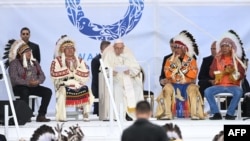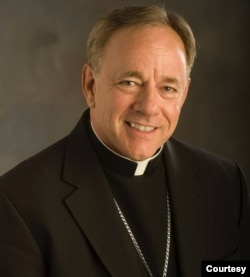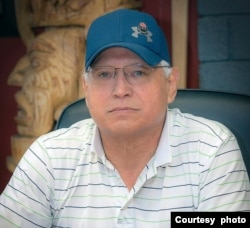Pope Francis’ recent visit to Canada featured a widely reported apology for decades of horrific abuses at church-run residential schools for Indigenous youth. But it remains to be seen how much the papal visit accomplished in reconciliation between the Catholic Church and Canada’s First Nations.
The catalyst for the recent visit to Canada by Pope Francis arose over a year ago, when ground-penetrating radar found more than 200 grave-like impressions outside a now-closed residential school in the town of Kamloops, about 250 kilometers east of Vancouver.
It was one of 139 such schools that existed across Canada from 1828 to 1996. Paid for by the Canadian government and run principally by the Catholic Church, approximately 150,000 First Nation, Inuit and Metis children were taken from their families and local communities and forced to attend the schools. Investigations have found that verbal, sexual and physical abuse were common, even rampant, at many schools.
Pope Francis officially apologized for the church’s role in the abuse in a visit to a site outside Edmonton, Alberta.
Vancouver Archbishop Michael Miller stood beside or behind the pope for much of the visit.
Miller said a fund of $23.5 million U.S. ($30 million Canadian) has been established to promote healing and reconciliation.
He said the next step for the church is to listen to former students.
“And our first task is to listen to victims. And let them express to us what they would like from us,” Miller said. “You know, sometimes it's counseling, it could be compensation and other ways and so on that, all of that we have to take our cues from those who come forward.”
Angela White is executive director of the Indian Residential School Survivors Society, which provides various types of support to former students. She said many survivors remain traumatized after the pope’s visit, while others accepted the apology and want to move forward.
She said it will be difficult to replace the people, language and culture that the church-run schools tried to suppress. White would like to see complete access to all records the Vatican and Catholic organizations have regarding the schools, the return of cultural artifacts to their original communities and the prompt allocation of all the money and resources the church has set aside for reconciliation.
White said many survivors and their families are hoping for a rebirth of their traditional languages.
“Maybe they can look at things like putting more action towards the revitalization of the language that was taken away,” White said. “And survivors talked about wholeheartedly how they were punished severely for even speaking a word of their language.”
Not everyone is satisfied. Greg Gabriel, chief of the Penticton Indian Band, called the pope’s visit a complete waste of time and money. He said further investigations are needed.
“Because what happened to our people and those children that are still lying in those graves, those were actual criminal actions, criminal activity that needs to be fully investigated,” he said. “Those were children.”
The first volume of a report released in May by the U.S. Interior Department said that 408 similar schools existed in 37 U.S. states. The report found both marked and unmarked burial areas at approximately 53 sites, and that number is expected to increase.













